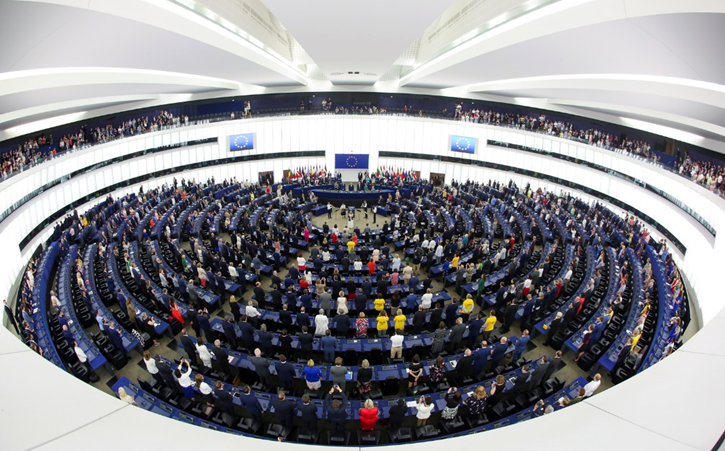
EULECTIONS’19 has developed an online course about EU’s history, its institutions and the instruments available for citizens’ participation. Enroll here and explore the three modules and contents.
The 5 scenarios for the future of Europe – Presentation
EULECTIONS’19 has developed a short video to explain the 5 scenarios for the future of Europe. Watch it to learn more!
1950-2020: The History of the EU
The history of the European Union begins five years after the end of the Second World War. On the 9th of May, 1950, French Foreign Minister Robert Schuman held a speech known as the Schuman declaration. In this speech, Schuman proposed Franco-German reconciliation by placing coal and steel production under a common authority. As these materials are needed to build things such as tanks, ships and guns, the communalizing of their production would make war between France and Germany “not merely unthinkable, but materially impossible”.
The European Commission is the body that initiates policies according to the general instructions given by the European Council. The Commission has its roots in the High Authority of the European Coal and Steel Community. After working with three different commissions for about a decade after the Rome Treaty, the Merger Treaty consolidated these Commissions into the Commission of the European Communities, which later became the European Commission. Learn more here
The European Parliament started as the Common Assembly of the European Coal and Steel Community, being composed of the national parliamentarians of the member states. Over the years, the body has gone through many changes to become what it is today. Starting in 1979, the members are chosen directly by the European people, and since the Treaty of Lisbon the European Parliament has the same law-making powers as the Council of the EU, elects the president of the Commission, and is the guardian of the Charter of Fundamental Rights. Its headquarters are in Strasbourg, but it also meets in Brussels. Learn more here
The European Council is where the leaders of the member states of the EU meet. Starting as informal meetings between country leaders of the European Community in 1961, the meetings have become more formal over the years, culminating in the Treaty of Lisbon in which they got the status of an official institution of the EU, being called the European Council, not to be confused with the Council of the EU in which government ministers meet. Learn more here
The Council of the European Union is the institution representing the member states’ governments. Also known informally as the EU Council or the Council of Ministers, it is where national ministers from each EU country meet to adopt laws and coordinate policies. The Council of the European Union has its roots in the Special Council of the European Coal and Steel Community. While its powers were very limited during this time, they were soon expanded through the Rome Treaty of 1957. Later, it became the Council of the EEC with the Merger Treaty of 1967 and then the Council of the EU with the Maastricht Treaty of 1992. Finally, the Lisbon Treaty brings us to today’s situation, in which the Council shares legislative powers with the European Parliament. Learn more here
Court of Justice of the European Union
As with some of the other institutions of the EU, the Court of Justice of the European Union (CJEU) has its roots in the European Coal and Steel Community (ECSC). After continuing as the Court of Justice for the European Communities, it became the CJEU, a court giving rulings on EU law. Learn more here
The European Central Bank has its roots in the European Monetary Institute (EMI). This institute was established as part of the Economic and Monetary Union (EMU), an idea that had floated around in Europe for a long time, but was finally taken up by the European Council in 1988. They gave then-President of the European Commission Jacques Delors, together with the heads of each national central bank, the assignment to come up with a plan for economic and monetary integration. This plan was formalized in the 1992 Maastricht Treaty, which eventually led to the introduction of the Euro and the European Central Bank in 1998. Learn more here
The European Court of Auditors was established with the second Budgetary Treaty, signed in 1975. However, at the time it was an informal institution. It became an official EU institution with the Treaty of Maastricht in 1992. The ECA audits the revenue and spending, in other words the budget, of the European Union. Learn more here

Site contributors
Wessel Mol is a 24-year old student currently enrolled in the MA in International Studies at Iscte – University Institute Lisbon. Originally from the Netherlands, after graduating high school he lived in Costa Rica, Switzerland and Colombia, before moving to Portugal for the master’s degree. Next to studying, he has been involved in simulations of the UN and the WTO, while also having worked as a Public Affairs intern for a large pension fund in the Netherlands. Currently he is a research assistant at the Centre for International Studies at Iscte-IUL. After studying he would like to work for an international organization, the EU or the Netherlands as a civil servant








